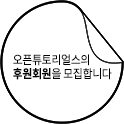토픽 결과물: ROS Kinetic용의 Kobuki에 Laser 센서가 추가돼요.
현 시점에서 Indigo에서 지원되던 turtlebot gazebo가 Kinetic에서는 지원이 원활하지 않아서 Kinetic 버전의 코스를 추가합니다. 이번 토픽은 ROS Indigo에서 했던 내용을 Kinectic 버전으로 수정합니다. 특히나, multi-robot을 위해 수정합니다.
준비 사항
(현재) 아래의 kobuki 패키지는 ROS Kinetic에 포함되었으므로 apt-get으로 설치할 수 있습니다.
$ sudo apt-get install ros-kinetic-kobuki*
(과거) 이번 강좌를 따라하기 위해서는 Kinetic용 kobuki package들이 설치되어 있어야 합니다. 이곳에서 kobuki_desktop을 clone한 후 branch를 kinetic으로 변경합니다.
$ cd ~/catkin_ws/src
$ git clone https://github.com/rohbotics/kobuki_desktop.git
$ git checkout kinetic
이번 강좌를 위해서 package를 하나 만들고, 아래와 같이 디렉터리들을 만듭니다.
$ cd ~/cakin_ws/src
$ catkin_create_pkg kobuki_hokuyo
$ cd kobuki_hokuyo
$ mkdir -p urdf/meshes
$ mkdir worlds
$ mkdir -p launch/includes
Kobuki URDF 준비
Kobuki의 URDF를 변경할 것이므로, 변경할 URDF 파일을 위에서 생성한 package로 복사합니다. 먼저 kobuki_description 패키지에 있는 urdf 파일들을 복사합니다.
$ roscd kobuki_description/urdf
$ cp * ~/catkin_ws/src/kobuki_hokuyo/urdf
kobuki_description에서 kobuki meshes 파일 및 images 파일을 복사합니다.
$ roscd kobuki_description
$ cp -r meshes/ ~/catkin_ws/src/kobuki_hokuyo/urdf/meshes/
hokuyo 센서 모델의 mesh파일을 이곳에서 복사하여 urdf/meshes 디렉터리 밑에 저장합니다.
Hokuyo 모델 생성
Hokuyo URDF 모델을 hokuyo.urdf.xacro이라는 이름으로 아래와 같이 생성합니다.
<?xml version="1.0"?>
<robot name="sensor_hokuyo" xmlns:xacro="http://ros.org/wiki/xacro"
xmlns:controller="http://playerstage.sourceforge.net/gazebo/xmlschema/#controller"
xmlns:interface="http://playerstage.sourceforge.net/gazebo/xmlschema/#interface">
<xacro:property name="hokuyo_link" value="0.1" /> <!-- Size of square 'hokuyo' box -->
<xacro:macro name="sensor_hokuyo" params="name parent *origin">
<joint name="${name}_joint" type="fixed">
<axis xyz="0 1 0"/>
<insert_block name="origin"/>
<parent link="${parent}"/>
<child link="${name}_link"/>
</joint>
<link name="${name}_link">
<collision>
<origin xyz="0 0 0" rpy="0 0 0"/>
<geometry>
<box size="${hokuyo_link} ${hokuyo_link} ${hokuyo_link}"/>
</geometry>
</collision>
<visual>
<origin xyz="0 0 0" rpy="0 0 0"/>
<geometry>
<mesh filename="package://kobuki_hokuyo/urdf/meshes/hokuyo.dae"/>
</geometry>
</visual>
<inertial>
<mass value="0.0001"/>
<origin xyz="0 0 0" rpy="0 0 0"/>
<inertia ixx="0.0001" ixy="0" ixz="0" iyy="0.0001" iyz="0" izz="0.0001"/>
</inertial>
</link>
<!-- hokuyo -->
<gazebo reference="${name}_link">
<sensor type="ray" name="head_hokuyo_sensor">
<pose>0 0 0 0 0 0</pose>
<visualize>true</visualize>
<update_rate>40</update_rate>
<ray>
<scan>
<horizontal>
<samples>720</samples>
<resolution>1</resolution>
<min_angle>-1.570796</min_angle>
<max_angle>1.570796</max_angle>
</horizontal>
</scan>
<range>
<min>0.20</min>
<max>6.0</max>
<resolution>0.01</resolution>
</range>
<noise>
<type>gaussian</type>
<!-- Noise parameters based on published spec for Hokuyo laser
achieving "+-30mm" accuracy at range < 10m. A mean of 0.0m and
stddev of 0.01m will put 99.7% of samples within 0.03m of the true
reading. -->
<mean>0.0</mean>
<stddev>0.01</stddev>
</noise>
</ray>
<plugin name="gazebo_ros_head_hokuyo_controller" filename="libgazebo_ros_laser.so">
<topicName>/scan</topicName>
<frameName>${name}_link</frameName>
</plugin>
</sensor>
</gazebo>
</xacro:macro>
</robot>
kobuki.urdf.xacro를 열어서 아래와 같은 세 곳에서 meshes 파일의 위치만 변경하고 저장합니다.
<mesh filename="package://kobuki_hokuyo/urdf/meshes/main_body.dae" />
<mesh filename="package://kobuki_hokuyo/urdf/meshes/wheel.dae"/>
<mesh filename="package://kobuki_hokuyo/urdf/meshes/wheel.dae"/>
kobuki_standalone.urdf.xacro를 복사하여 kobuki_hokuyo.urdf.xacro을 만들고 아래와 같이 수정하여 위에서 생성한 Hokuyo 모델을 include합니다. 이 때 사용되는 urdf 파일들은 새로 생성한 패키지의 파일들입니다.
<!-- kobuki_hokuyo.urdf.xacro -->
<?xml version="1.0"?>
<robot name="kobuki_hokuyo"
xmlns:sensor="http://playerstage.sourceforge.net/gazebo/xmlschema/#sensor"
xmlns:controller="http://playerstage.sourceforge.net/gazebo/xmlschema/#controller"
xmlns:interface="http://playerstage.sourceforge.net/gazebo/xmlschema/#interface"
xmlns:xacro="http://ros.org/wiki/xacro">
<!-- Defines the kobuki component tag. -->
<xacro:include filename="$(find kobuki_hokuyo)/urdf/kobuki.urdf.xacro" />
<!-- include hokuyo model and set its pose -->
<xacro:include filename="$(find kobuki_hokuyo)/urdf/hokuyo.urdf.xacro"/>
<xacro:sensor_hokuyo name="laser" parent="base_link">
<origin xyz="0 0 0.12" rpy="0 0 0"/>
</xacro:sensor_hokuyo>
<kobuki/>
</robot>
gazebo world 파일 생성
$ gazebo
gazebo를 실행시켜서 Edit -> Building Editor를 클릭하여 world 모델을 만듭니다. 여기서 world 파일명은 simple.world로 하였습니다. 아래와 같이 간단한 모델을 만듭니다. 만들 때 한가지 팁은 wall의 시작 위치들을 직접 입력하여 모델의 위치를 잡는 것입니다. 나중에 kobuki 초기 위치 설정등에 유용하게 쓸 수 있습니다. 참고로 본 토픽에서는 world의 시작점을 (0,0)으로 설정하였습니다. 
gazebo 파일 준비
kobuki_gazebo 패키지에서 아래와 같이 robot.launch.xml 파일을 복사합니다.
$ roscd kobuki_hokuyo/launch/includes
$ roscp kobuki_gazebo robot.launch.xml .
robot.launch.xml 파일을 열어서 아래와 같이 새로 생성한 패키지를 사용하고 kobuki_standalone.urdf.xacro를 위에서 생성한 kobuki_hokuyo.urdf.xacro로 변경합니다. 또한, kobuki의 시작점을 설정합니다. 여기서는 1.5, 1.5, 0.0 으로 하였습니다.
<!--
Spawns Kobuki inside a Gazebo simulation
-->
<launch>
<arg name="robot_name" value="mobile_base"/>
<param name="robot_description"
command="$(find xacro)/xacro.py '$(find kobuki_hokuyo)/urdf/kobuki_hokuyo.urdf.xacro'"/>
<node pkg="gazebo_ros" type="spawn_model" name="spawn_$(arg robot_name)"
args="-x 1.5 -y 1.5 -z 0 -unpause -urdf -param robot_description -model $(arg robot_name)" respawn="false">
</node>
<node pkg="robot_state_publisher" type="robot_state_publisher" name="robot_state_publisher">
<param name="publish_frequency" type="double" value="30.0" />
</node>
<node pkg="nodelet" type="nodelet" name="$(arg robot_name)_nodelet_manager" args="manager"/>
</launch>
마지막으로, 위에서 생성한 gazebo world로 hokuyo가 부착된 kobuki 모델을 gazebo에서 spawn하는 launch 파일을 만듭니다.
$ roscd kobuki_hokuyo/launch
$ touch kobuki_hokuyo.launch
그 다음 kobuki_hokuyo.launch 파일에 다음과 같이 내용을 입력합니다.
<!-- Launches Kobuki Gazebo simulation in an empty world -->
<launch>
<!-- start Gazebo with an empty world -->
<include file="$(find gazebo_ros)/launch/empty_world.launch">
<arg name="use_sim_time" value="true"/>
<arg name="debug" value="false"/>
<arg name="world_name" value="$(find kobuki_hokuyo)/worlds/simple.world"/>
</include>
<!-- spawn the robot -->
<include file="$(find kobuki_hokuyo)/launch/includes/robot.launch.xml"/>
</launch>
위 launch 파일을 실행합니다.
$ roslaunch kobuki_hokuyo kobuki_hokuyo.launch
그러면 아래와 같이 kobuki base에 hokuyo 센서 모델이 추가된 것을 확인할 수 있습니다. 파란색 rays는 visualize 옵션을 false하면 사라집니다. 


